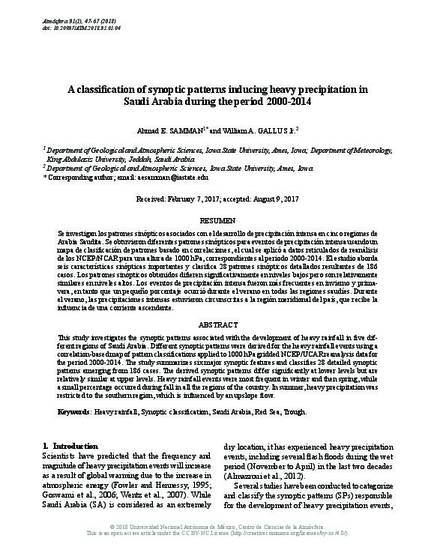
This study investigates the synoptic patterns associated with the development of heavy rainfall in five different regions of Saudi Arabia. Different synoptic patterns were derived for the heavy rainfall events using a correlation-based map of pattern classifications applied to 1000 hPa gridded NCEP/UCAR reanalysis data for the period 2000-2014. The study summarizes six major synoptic features and classifies 28 detailed synoptic patterns emerging from 186 cases. The derived synoptic patterns differ significantly at lower levels but are relatively similar at upper levels. Heavy rainfall events were most frequent in winter and then spring, while a small percentage occurred during fall in all the regions of the country. In summer, heavy precipitation was restricted to the southern region, which is influenced by an upslope flow.
Available at: http://works.bepress.com/william_gallus/73/

This article is published as Samman, Ahmad E., and William A. Gallus Jr. "A classification of synoptic patterns inducing heavy precipitation in Saudi Arabia during the period 2000-2014." Atmósfera 31, no. 1 (2018): 47-67. DOI: 10.20937/atm.2018.31.01.04. Posted with permission.